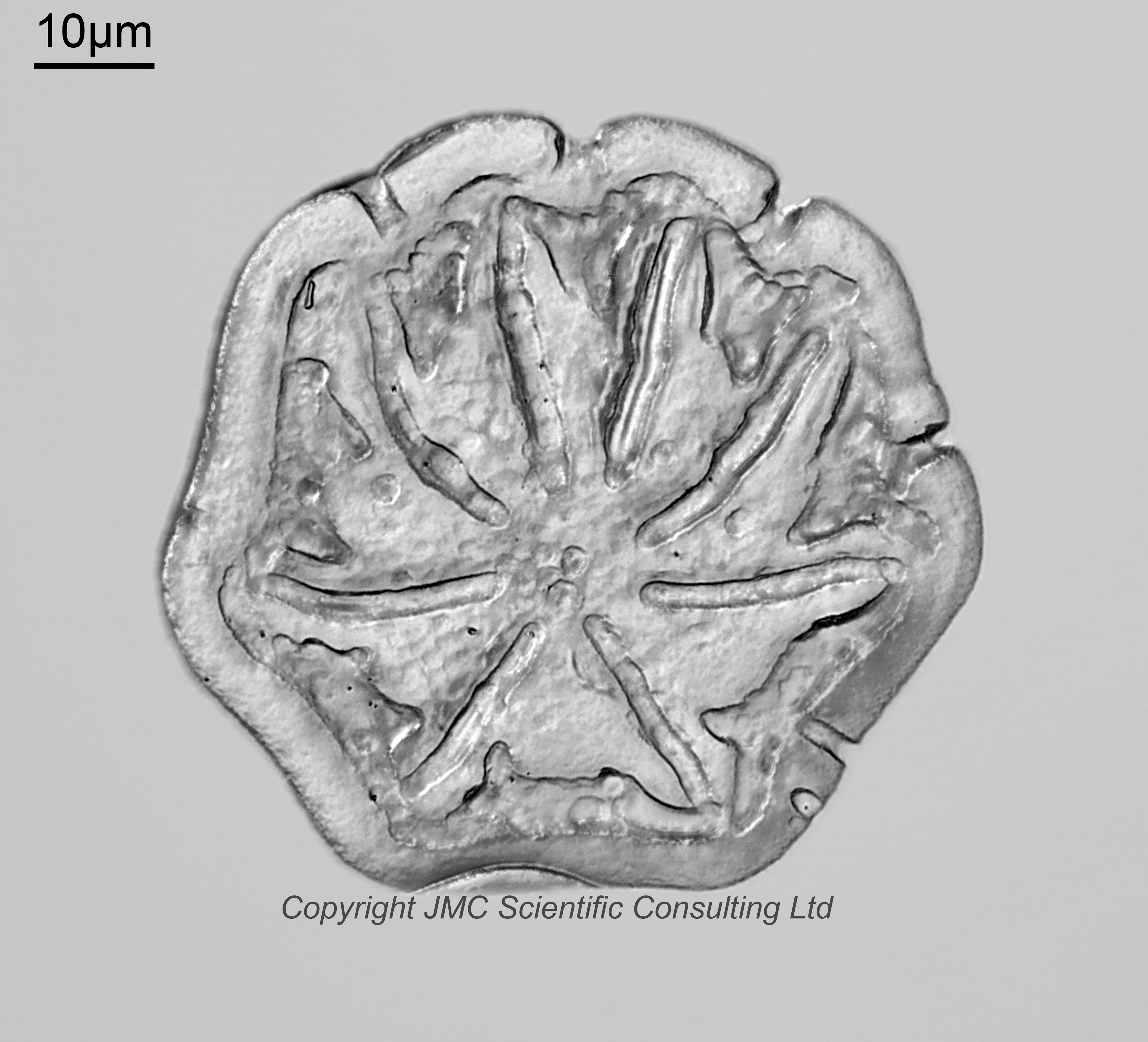














A really interesting slide. A arrangement described as ‘Asterolampra various’ from Barbados. Prepared by Arthur Cottam. I suspect the majority of these are what would now be described as Liostephania. More on that in a minute. Olympus BHB microscope using 450nm LED light. 63x Leitz Pl Apo 1.4 objective, oil immersion. Olympus Aplanat Achromat condenser, oil immersion, oblique lighting. 2.5x Nikon CF PL photoeyepiece. Monochrome converted Nikon d850 camera. Image stacks prepared in Zerene (Pmax).
So, what are Liostephania? That is a good question and one that I cannot go into full detail of here. Originally proposed to perhaps be interior valves of Asterolampra they are currently thought more likely to represent dissolution stages of species of the genera Asterolampra and Asteromphalus rather than be separate taxa, or to be internal moulds preserved in amorphous silica. They are now typically referred to as ‘Liostephania’. So perhaps this is better thought of as a ‘stage’ in the break down of the original fossils. I can sort of see this being true, but I can see some really sharply defined features in some of my images. If this is dissolution then there must be parts which are more readily dissolved than others. Whatever the exact process I think it is fair to say that it remains to be fully understood.
Some recommended reading on the topic;
Liostephania and its allies. Payne, F. W. (Frederick William). 1922.
G.D. Hanna, A.L. Brigger, Observations on Liostephania, Nova
Hedwigia 31 (1970) 89–101.
An Introduction to the Microscopical Study of Diatoms, Robert B. McLaughlin.
Edited by John Gustav Delly & Steve Gill.
Silica Dissolution and Overgrowth of Fossil Diatoms, Naja Mikkelsen, Micropaleontology, Vol. 23, No. 2 (Apr., 1977), pp. 223-226 (4 pages). https://doi.org/10.2307/1485336
Cenozoic marine planktonic diatom stratigraphy of the tropical Indian Ocean. In: Fisher, R. L., Bunce, E. T., et al., Initial reports of the Deep Sea Drilling Project, Volume XXIV. Washington, D.C.: U. S. Govt. Printing Office, pp. 887-967.
Barrett, P. J. , Fielding, C. R. and Wise, S. W. (1998): Initial report on CRP-1, Cape Roberts Project, Antarctica, Terra Antartica, Bremerhaven, PANGAEA, 5 (1), 187 p..
Middle Eocene radiolarian and diatom accumulation in the equatorial Atlantic (Demerara Rise, ODP Leg 207): Possible links with climatic and palaeoceanographic changes, Comptes Rendus Palevol, 2007, 6(1-2), 103-114.https://doi.org/10.1016/j.crpv.2006.08.002